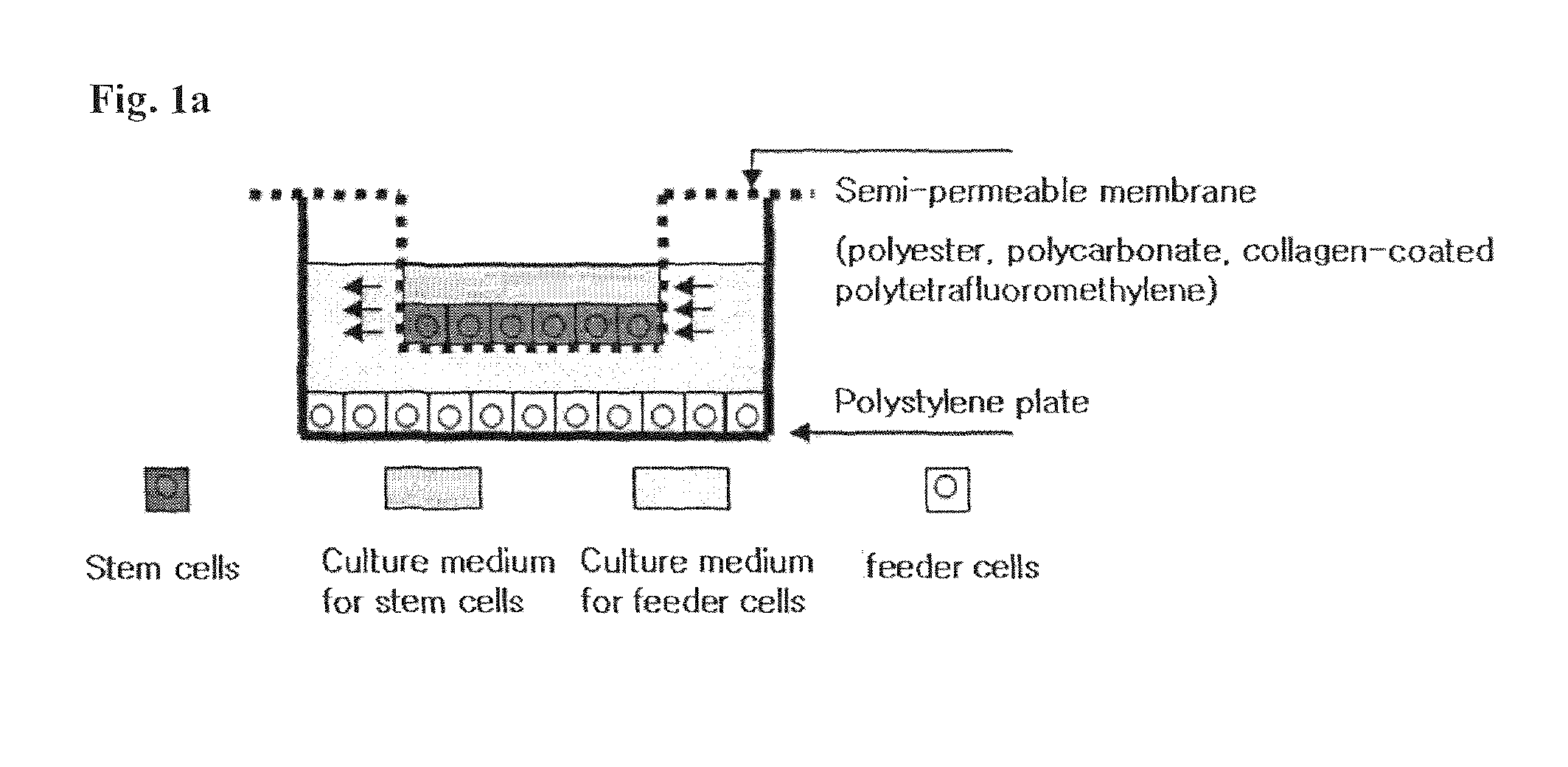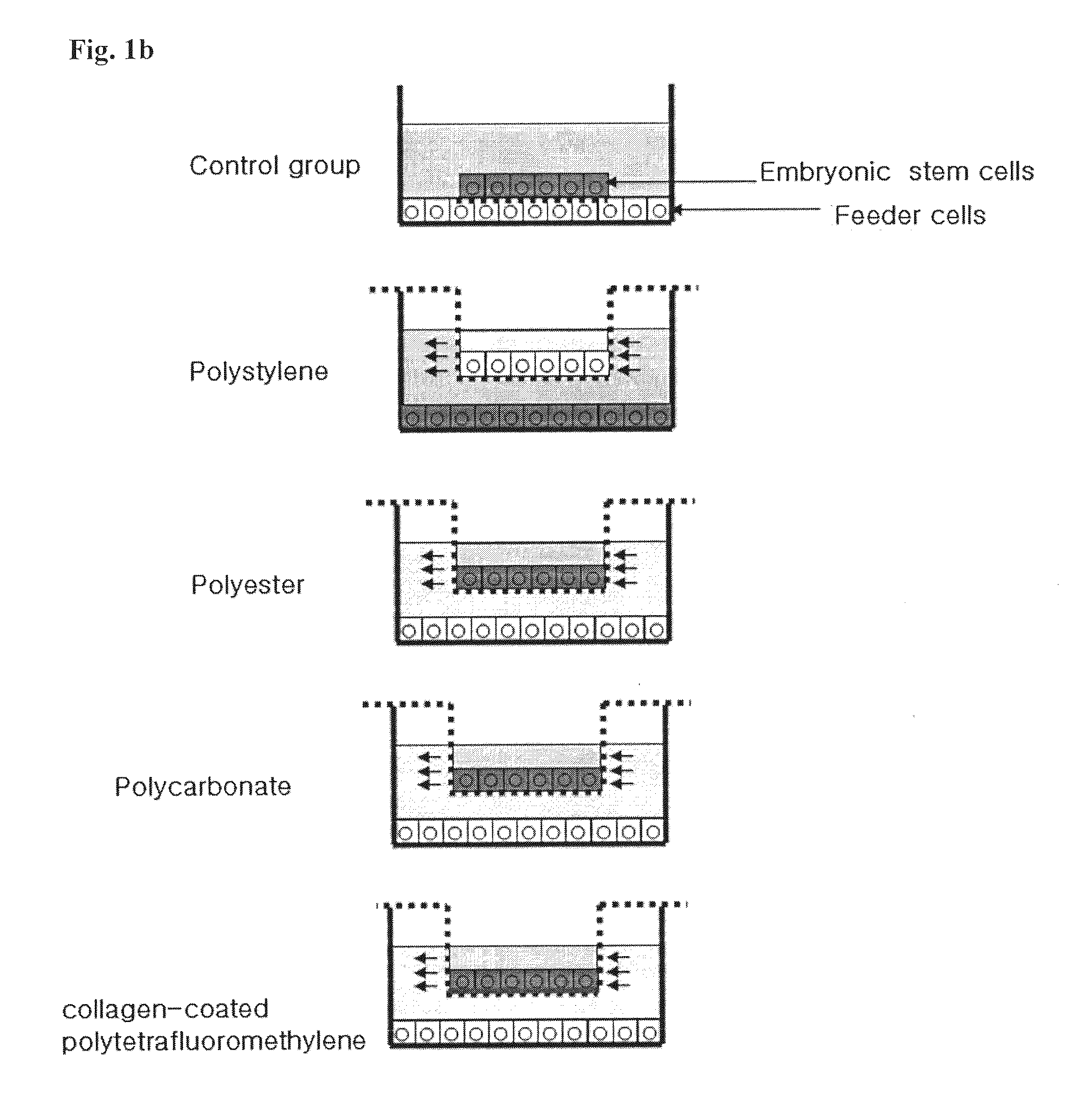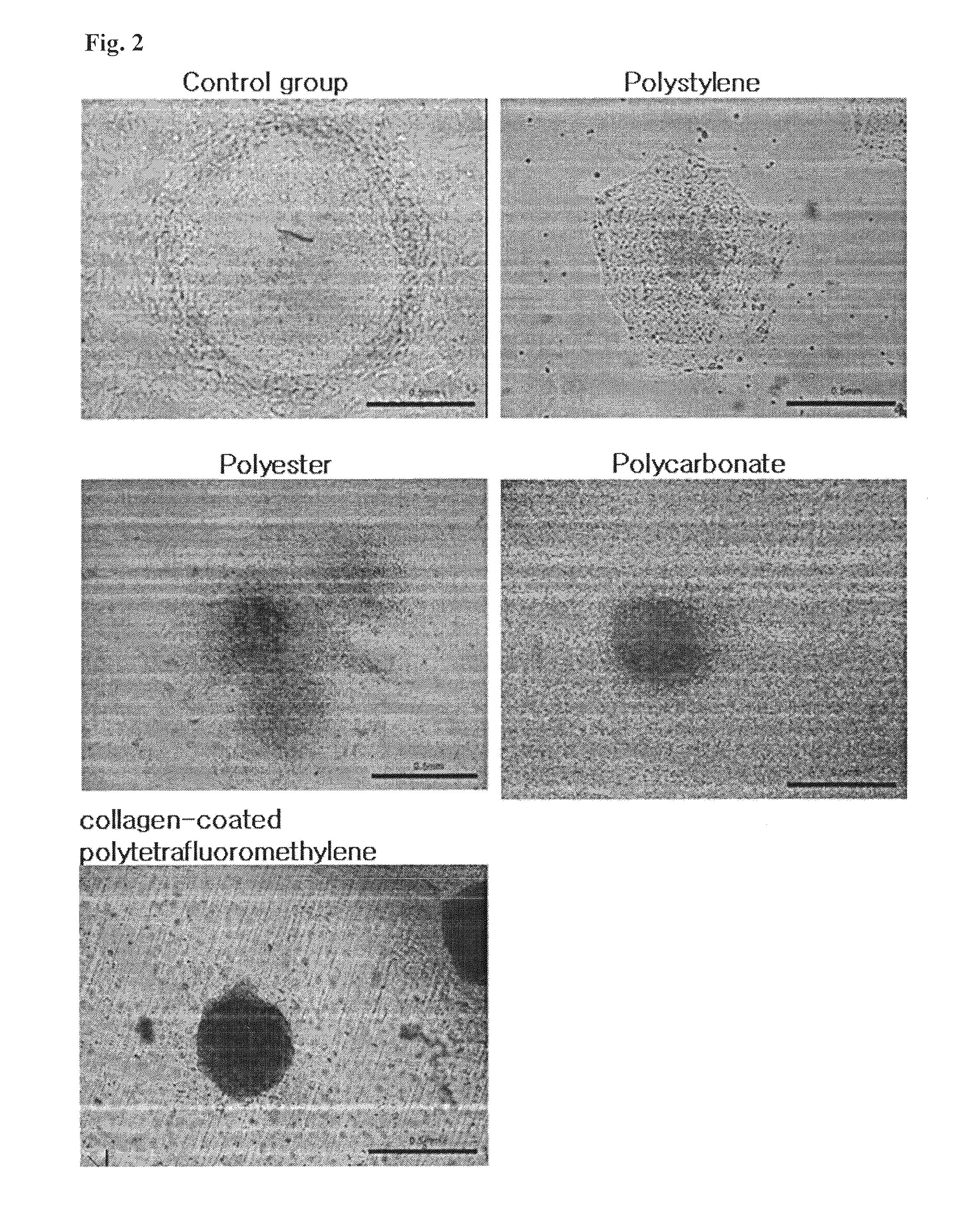Method for co-culture of human embryonic stem cells and fibroblast feeder cells using a polyester membrane
a technology of fibroblast feeder cells and polyester membrane, which is applied in the field of co-culture of fibroblast feeder cells, can solve the problems of reducing the cell survival of feeder cells to 5 to 7 days, difficult to culture and manipulate human embryonic stem cells, and improper mass-cultur
- Summary
- Abstract
- Description
- Claims
- Application Information
AI Technical Summary
Benefits of technology
Problems solved by technology
Method used
Image
Examples
example 1
Cultivation of Embryonic Stem Cells in Control Group
[0056]Mouse embryonic fibroblasts were extracted from 13.5 day-pregnant mice (CFI, C57BL6) and primarily cultured. The resulting cells were treated with 10 μg / ml of mitomycin (Mitomycin C, Sigma, Cat. No. M-4287) as a cytostatic agent for one and a half hours to be used for feeder cells. Then, the resultants were inoculated in 4×104 / cm2 of cell density and on the next day, embryonic stem cells (HSF6) were seeded. In the composition of culture media, 3.069 g / l sodium bicarbonate (Sigma, USA, Cat. No. S5761), 2 mM L-glutamine (Sigma, Cat. No. S8540), 1% penicillin (50 U / ml; Sigma, Cat. No. P4687) / streptomysin (50 ug / ml; Sigma, USA, Cat. No. S1277), 20% Knock-Out serum replacement (SR; Invitrogen BRL, Cat. No. 10828-028), 4 ng / ml Basic Fibroblasts Growth Factor (bFGF; Invitrogen BRL, Cat. No. 13256-029) were added to basic DMEM / F12 medium (GIBCO, USA, Cat. No. 12500-062). The stem cells were cultivated at 37° C. in 5% CO2 incubator wh...
example 2
Co-Culture of Embryonic Stem Cells Using Semi-Permeable Membrane
[0057]Co-culture was performed by using general polystylene plates and commercially available transwells purchased from Corning Co. Ltd. Above all, mouse embryonic fibroblasts were treated with 10 μg / ml of mitomycin (Mitomycin C, Sigma, Cat. No. M-4287) as a cytostatic agent for one and a half hours to be used for feeder cells. Otherwise without mitomycin, the fibroblasts were inoculated in 5×103 / cm2 of cell density. Then on the next day, fresh culture media for embryonic stem cells was poured on the upper space and equilibriated. After monitoring equilibrium between upper and lower media, embryonic stem cells (HSF6) were seeded onto a membrane. In the composition of culture media, DMEM media (GIBCO, USA, Cat. No.) was blended with 3.7 g / l sodium bicarbonate (Sigma, USA, Cat. No. S5761), 2 mM L-glutamine (Sigma, Cat. No. S8540), penicillin (50 U / ml; Sigma, Cat. No. P4687) / streptomycin (50 ug / ml; Sigma, USA, Cat. No. S12...
example 3
[0058]Human embryonic stem cells were selected by using alkaline phosphatase staining. Stained colonies of stem cells were judged to remain indifferent and counted. Clear colonies without staining were judged to be differentiated and calculated. In order to perform alkaline phosphatase staining, NBT / BCIP (Roche, Germany, Cat. No. 1 681 451) solution was added to Tris-Cl (pH 9.5) buffer in 99:1 of ratio and reacted. Then, coloring reaction was monitored (See FIGS. 3 and 8; Experimental results 1 and 2).
PUM
| Property | Measurement | Unit |
|---|---|---|
| diameter | aaaaa | aaaaa |
| diameter | aaaaa | aaaaa |
| pH | aaaaa | aaaaa |
Abstract
Description
Claims
Application Information
 Login to View More
Login to View More - R&D
- Intellectual Property
- Life Sciences
- Materials
- Tech Scout
- Unparalleled Data Quality
- Higher Quality Content
- 60% Fewer Hallucinations
Browse by: Latest US Patents, China's latest patents, Technical Efficacy Thesaurus, Application Domain, Technology Topic, Popular Technical Reports.
© 2025 PatSnap. All rights reserved.Legal|Privacy policy|Modern Slavery Act Transparency Statement|Sitemap|About US| Contact US: help@patsnap.com



